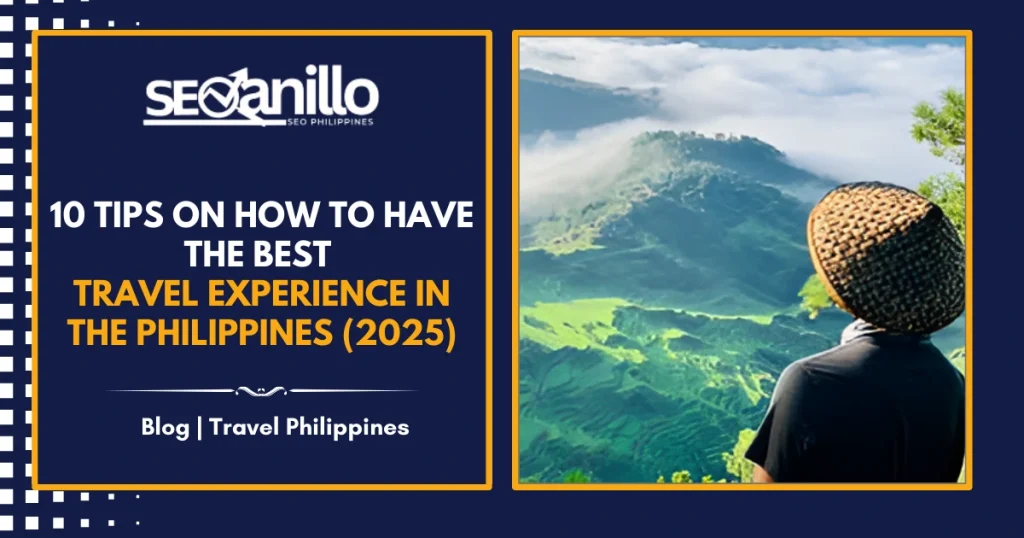In 2024, the Philippines was recognized by Australia as their top choice for a travel destination. Recent statistics also revealed that the number of international tourists visiting the Philippines reached around 5.44 million last year.
With its breathtaking beaches, rich culture, and warm hospitality, the country promises unforgettable experiences. However, without proper planning, what could be a dream getaway may turn into a chaotic and stressful trip.
So, before you pack your bags, take a moment to ask yourself, are you truly ready for the adventure that awaits? Don’t worry, we’ve got you covered! Because in this blog, we’ve prepared this Philippines travel guide packed with essential tips to ensure you have the best travel experience in the Philippines in 2025.
10 Tips on How to Have the Best Travel Experience in the Philippines (2025)
1. Check the Weather Before Your Trip
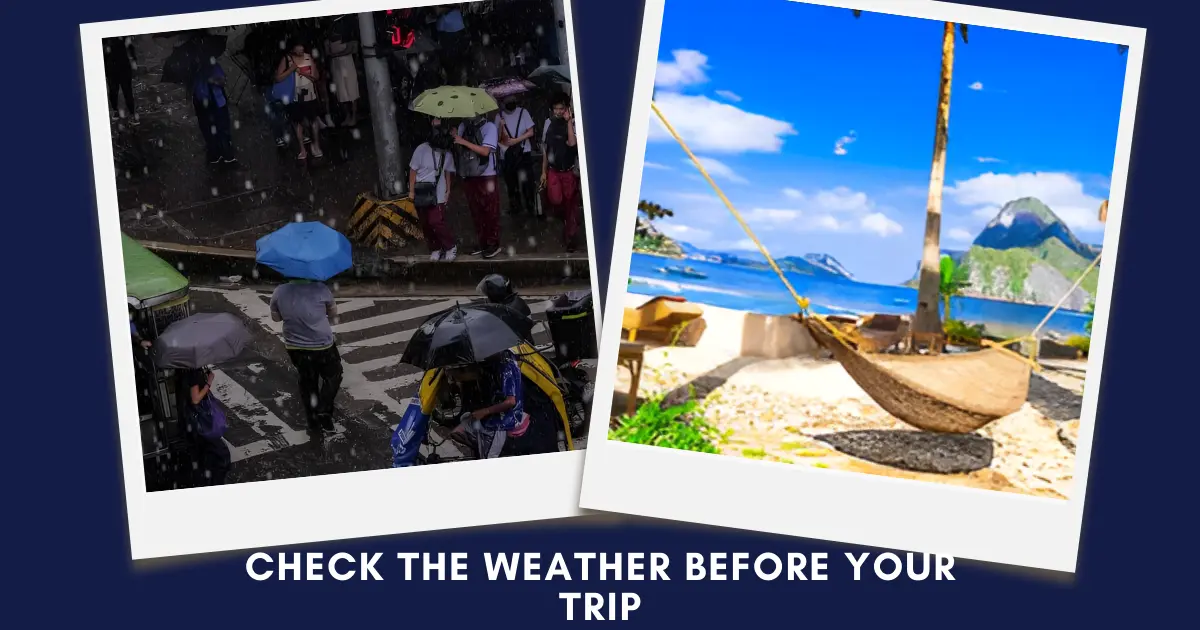
The Philippines is known for its beautiful tropical climate, but that also means unpredictable weather. To make the most of your trip, plan around the dry season (November to May) which is the best time to travel in the Philippines where skies are clearer, and outdoor adventures are at their best.
If you’re traveling during the rainy or typhoon season, always check the forecast before heading out. Getting stuck on an island during a storm is not the kind of adventure you want! Pack light, breathable clothes for the heat but also bring a rain jacket, just in case. A little preparation goes a long way in ensuring a smooth and enjoyable trip.
2. Always Carry Sufficient Cash

Cash is still king in many parts of the Philippines, especially when you venture beyond major cities. If you’re heading to off-the-beaten-path destinations like Sagada or Batanes, don’t rely too much on credit cards. Many local shops, markets, and transport services only accept cash. ATMs can be hard to find in remote areas, and when you do spot one, it might have lower withdrawal limits or extra fees.
It’s best to withdraw enough cash in larger towns before traveling to secluded spots. Keep a mix of small and large bills, smaller ones for daily expenses like food and transport, while the bigger ones for accommodations or tours. This might be a little planning but it ensures a hassle-free adventure.
3. Bring an eSIM or Portable WiFi
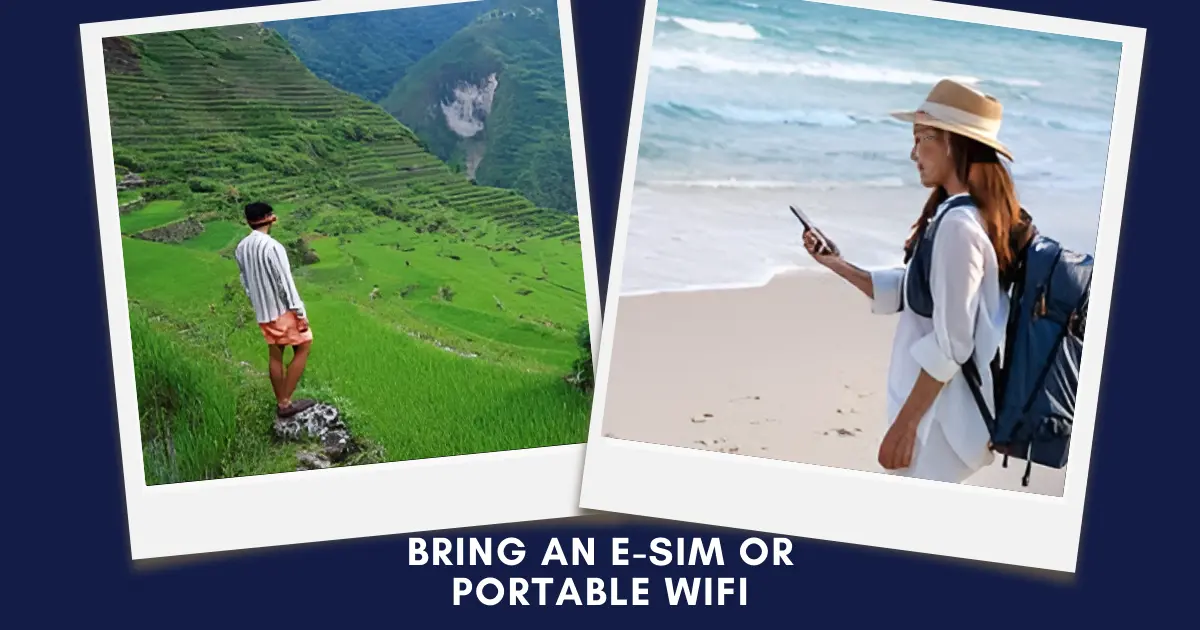
Staying connected in the Philippines can be challenging, especially in rural areas and remote islands. While WiFi is available in cities, it may be slow or unstable in less-developed locations. To ensure a reliable connection, consider getting an eSIM or a portable WiFi device.
An eSIM allows you to set up mobile data before arriving, while a portable WiFi device lets you share internet access with travel companions. Globe and Smart are the most recommended networks, and SIM cards are often available at airports or malls. Having your own internet source makes navigation easier and keeps you connected with loved ones.
4. Expect Travel Delays
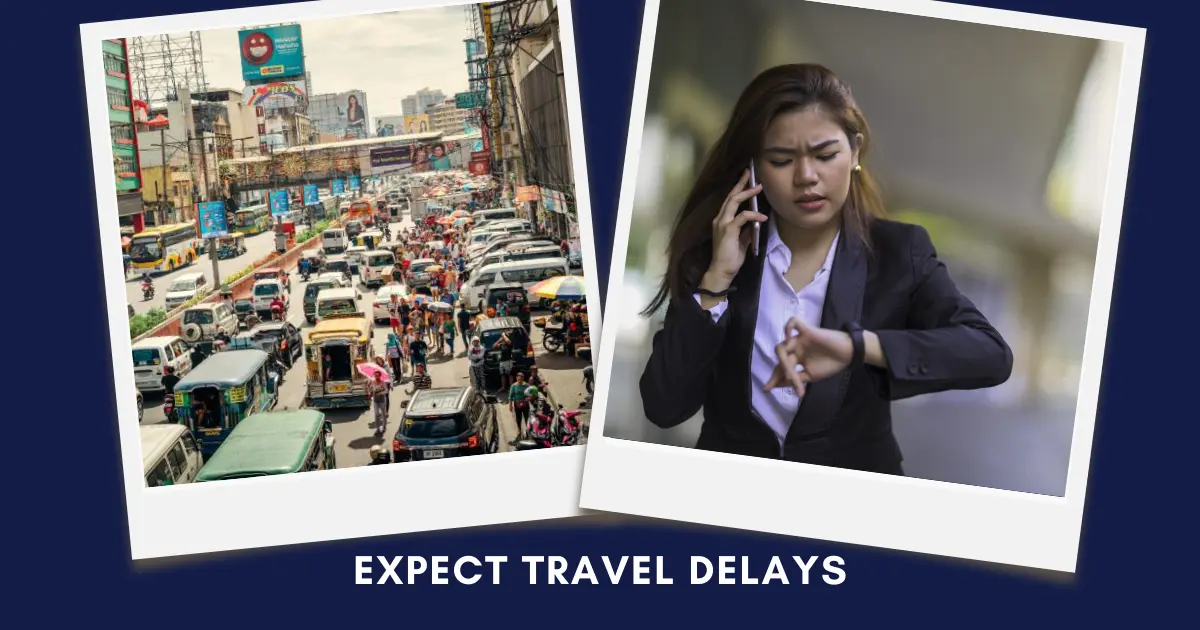
Travel delays are a common part of getting around in the Philippines, so keeping your schedule flexible is important. Buses, ferries, and domestic flights may not always depart on time due to traffic, weather conditions, or operational changes. Even restaurant service and guided tours can take longer than expected.
Instead of feeling frustrated, take these moments as an opportunity to enjoy the surroundings and experience the local way of life. Allowing extra time in your itinerary can also make the journey smoother and more enjoyable.
5. Be Prepared for Unpredictable Public Transportation
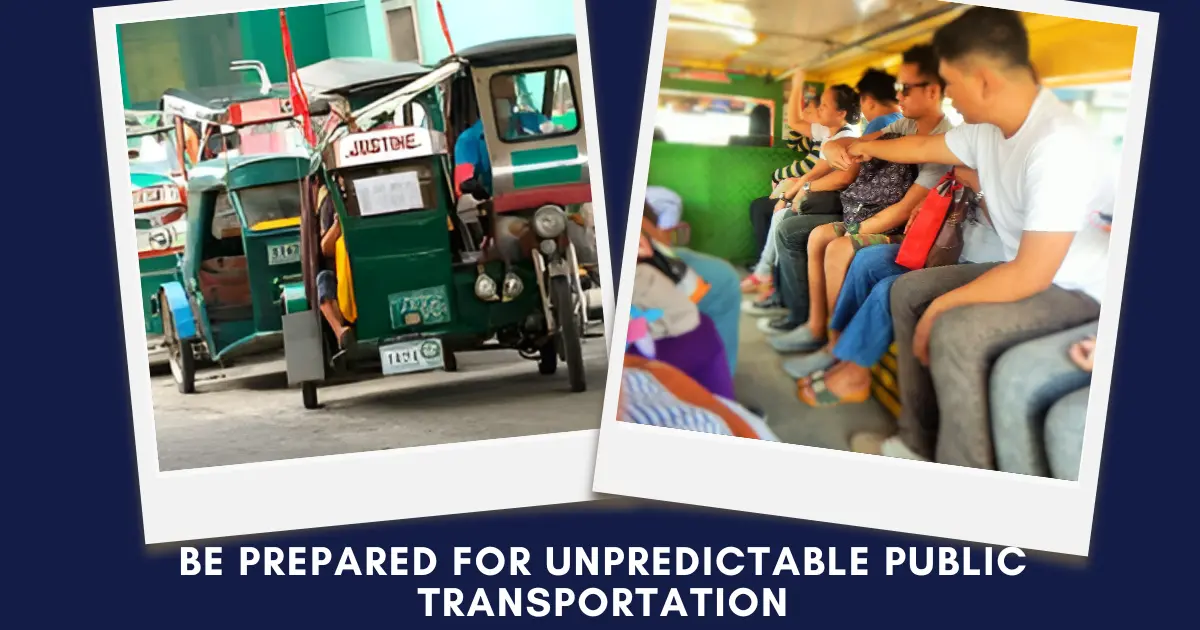
Getting around the Philippines using public transportation can be an adventure on its own. Jeepneys, tricycles, and buses are the most common ways to travel, but they don’t always follow fixed schedules. Be prepared for crowded rides, especially in major cities, and always have small bills for fares.
If you prefer a more convenient option, ride-hailing apps like Grab or inDrive are available in urban areas. For long-distance travel, ferries and domestic flights are essential, so arriving early at terminals helps avoid unnecessary stress. Embracing the local way of commuting adds to the experience and makes the journey more memorable.
6. Try the Local Cuisine
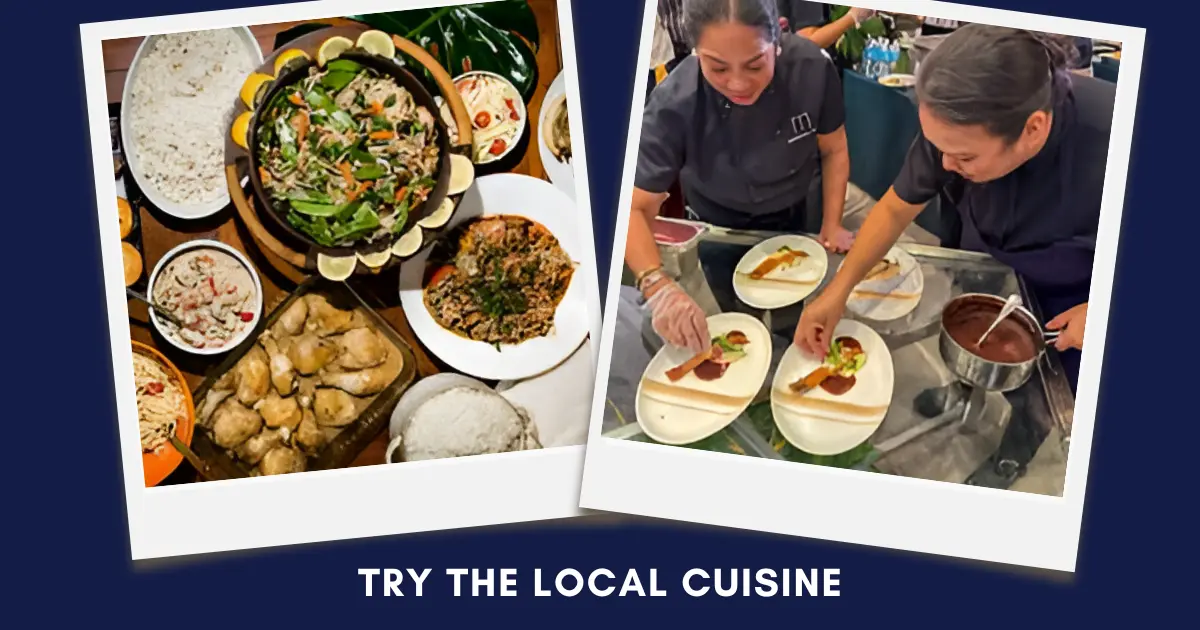
Food is a big part of Filipino culture, and trying local dishes is one of the best ways to experience it. While classics like adobo and lechon are must-tries, every region has its own specialties like Bicol’s spicy laing or the comforting batchoy from Iloilo. But if you’re up for an adventure, street food like Isaw (grilled chicken intestines) and balut (fertilized duck egg) offer unique flavors you won’t find anywhere else.
For the best experience, ask locals where they eat, crowded food stalls are usually a good sign. Sharing food is also a Filipino tradition, so don’t be surprised if someone invites you to join them with a friendly ‘Kain tayo!
7. Keep Your Belongings Safe While Traveling
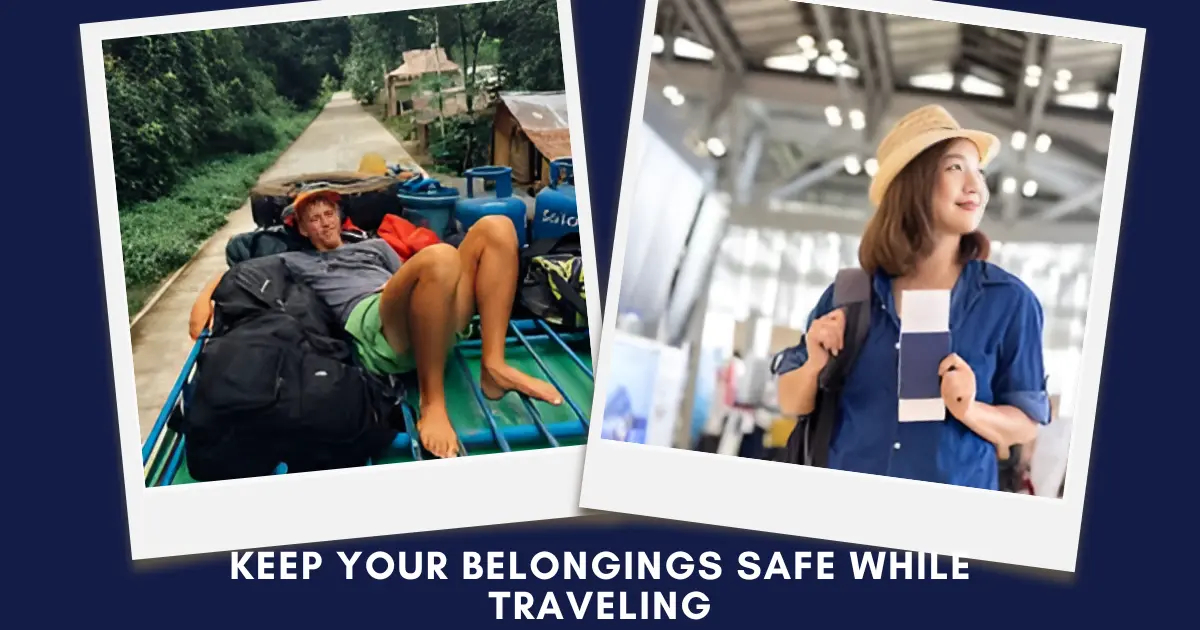
Many tourists ask if it is safe to travel to the Philippines. The country is a welcoming destination, but like any popular tourist spot, it’s important to keep an eye on your belongings. In crowded areas, carry your bag in front of you and avoid distractions that could be tricks for pickpocketing. Using anti-theft bags or money belts adds an extra layer of security.
It’s also best to avoid flashing expensive gadgets or jewelry, as it can attract unwanted attention. Keep copies of important documents like your passport and ID just in case. Taking these precautions will help you focus on enjoying your trip without unnecessary worries
8. Go Island Hopping
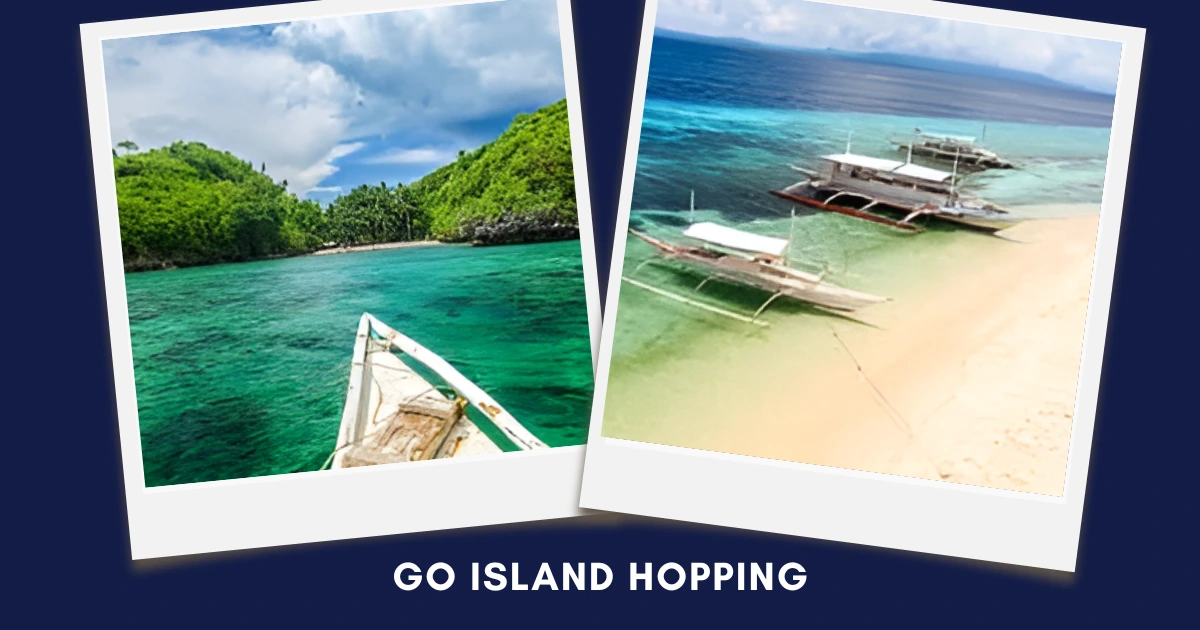
Island hopping is one of the best ways to experience the beauty of the Philippines. With over 7,000 islands, each destination offers something unique, the powdery white sand of Boracay, the stunning lagoons of Palawan, and the surfing paradise of Siargao. This adventure lets you explore hidden beaches, snorkel in crystal-clear waters, and discover marine life up close.
Visiting multiple islands is exciting, but having a manageable itinerary allows you to fully enjoy each stop. Beyond the scenic views, island hopping gives you the chance to meet locals, taste fresh seafood, and experience the laid-back island lifestyle.
As part of this Philippines travel guide, don’t forget to pack essentials like aqua shoes, a waterproof bag, and reef-safe sunscreen for a hassle-free trip. Most importantly, be a responsible traveler by respecting local conservation efforts and leaving no trace behind.
9. Learn Basic Filipino Phrases for a Better Experience
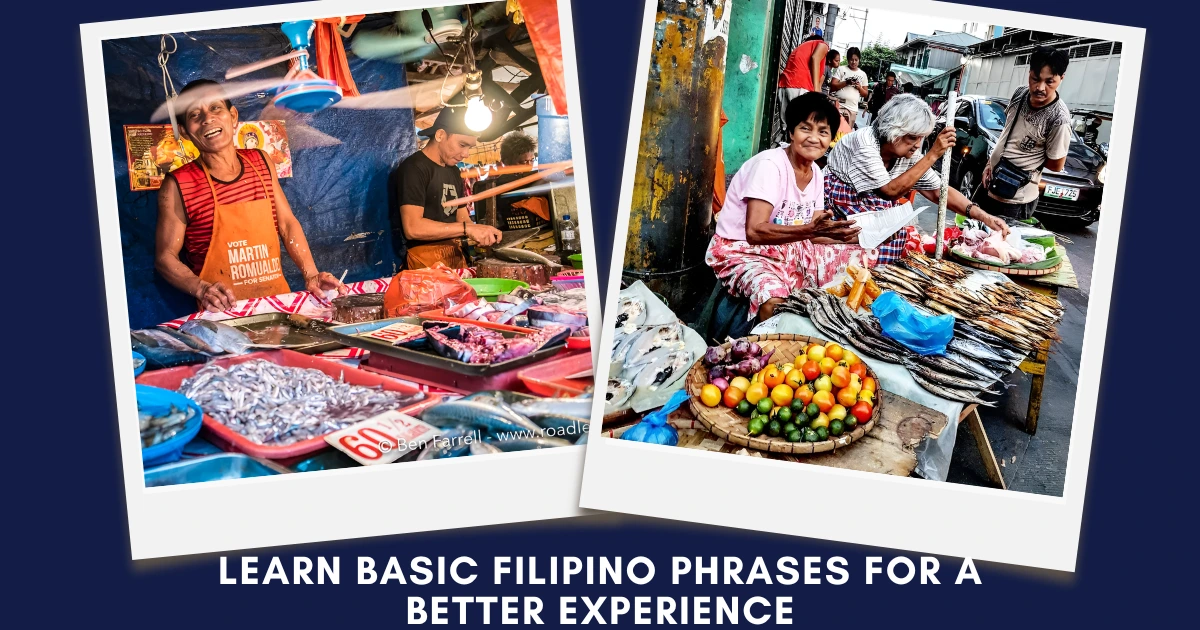
Even though English is widely spoken in the Philippines, learning a few Filipino phrases can make your experience even more enjoyable. Locals appreciate it when visitors make an effort to speak their language, even if it’s just simple greetings. Saying “Kamusta?” (Hello/How are you?), “Salamat” (Thank you), or “Magandang umaga” (Good morning) can bring smiles and spark friendly conversations.
Filipinos are known for their warmth and hospitality, so don’t hesitate to ask for help if needed, people are often more than happy to assist. While Filipino (Tagalog) is the national language, different regions have their own dialects, so don’t be surprised if you hear variations.
Regardless, using a few local words with a smile makes a great impression and adds a personal touch to your interactions.
10. Pack Wisely for a Comfortable and Hassle-Free Trip

The Philippines has a tropical climate, which means it can get hot and humid, especially during the summer months. Lightweight, breathable clothing like cotton shirts, shorts, and dresses will help keep you comfortable. If you’re heading to the beach, don’t forget essentials like sunscreen, a waterproof bag, and insect repellent.
For trips to cooler destinations like Sagada or Mt. Pulag, pack a light jacket or windbreaker to stay warm. In some regions, particularly in Mindanao, dressing modestly is a sign of respect, especially when visiting mosques or local communities. Some places even offer malongs (traditional wrap-around skirts) and headscarves for visitors.
Packing smart ensures a hassle-free trip, so bring only what you need while keeping cultural considerations and environmental responsibility in mind.
Embrace the Adventure: Your Unforgettable Journey Awaits in the Philippines

Traveling to the Philippines is an experience like no other, stunning landscapes, vibrant culture, and warm hospitality await you. But as with any adventure, the key to truly enjoying it lies in preparation and an open mind.
Embrace the unexpected, go with the flow, and savor every moment, from breathtaking island views to a simple conversation with a friendly local. These tips will help you navigate your journey smoothly and make every experience unforgettable. So pack your bags, set your spirit free, and get ready for a great adventure you’ll never forget.
Looking for more content like this? Samseophilippines can help you create engaging blogs for your website and boost your online presence. Contact us today.

